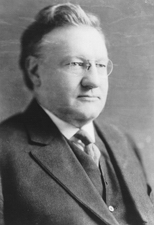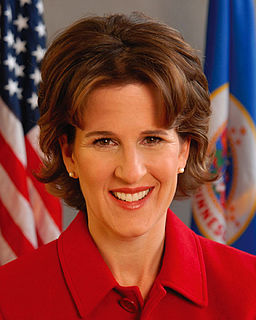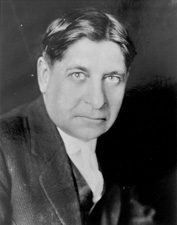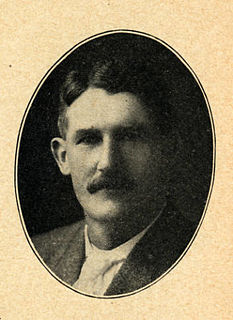This page is based on this
Wikipedia article Text is available under the
CC BY-SA 4.0 license; additional terms may apply.
Images, videos and audio are available under their respective licenses.
Einar Hoidale was an American lawyer, newspaper editor and elected official. He served as a member of the United States House of Representatives during the 1930s.

The Grassroots-Legalize Cannabis Party is a political third party in the U.S. state of Minnesota created in 1986 to oppose drug prohibition. The party shares many of the progressive values of the Farmer-Labor Party but with an emphasis on cannabis/hemp legalization issues.

The United States Senate elections of 1930 occurred in the middle of Republican President Herbert Hoover's term. With the Great Depression beginning to take hold, Republican incumbents became unpopular, and Democrats picked up a net of eight seats, erasing the Republican gains from the previous election cycle. Republicans retained control of the U.S. Senate since Vice President Charles Curtis cast the tie-breaking vote. This was the first of four consecutive Senate elections in the Depression in which Democrats made enormous gains, achieving a cumulative pick-up of 34 seats.
The Minnesota Democratic Party was a political party in Minnesota that existed from the formation of Minnesota Territory in 1849 until 1944, when the party merged with the Minnesota Farmer-Labor Party to form the modern Minnesota Democratic-Farmer-Labor Party.

The Minnesota Secretary of State is the state secretary of state of the state of Minnesota.

Arlan Ingehart Stangeland was an American politician from the U.S. state of Minnesota. As a Republican, Stangeland served on the Barnesville, Minnesota school board (1976–1977) and as a member of the Minnesota House of Representatives (1966–1975) before being elected to the U.S. House of Representatives as the representative from Minnesota's 7th congressional district in a special election to fill the vacancy caused by the resignation of Robert Bergland. Stangeland served in the 95th, 96th, 97th, 98th, 99th, 100th, and 101st congresses,. He lost his campaign for reelection in the 1990 House election and subsequently retired from politics.
Herman Carl Andersen was a U.S. Representative from Minnesota

Minnesota is known for a politically active citizenry, with populism being a longstanding force among the state's political parties. Minnesota has consistently high voter turnout; in the 2008 U.S. presidential election, 77.8% of eligible Minnesotans voted – the highest percentage of any U.S. state or territory – versus the national average of 61.7%. This was due in part to its same day voter registration laws; previously unregistered voters can register on election day, at their polls, with evidence of residency.

The 1930 Minnesota gubernatorial election took place on November 4, 1930. It was the first gubernatorial race to start in Minnesota since the beginning of the Great Depression, which contributed to the meteoric rise of the Farmer–Labor Party in the state. Farmer–Labor Party candidate Floyd B. Olson decisively defeated Republican Party of Minnesota challenger Raymond P. Chase.

The 2010 Minnesota State Auditor election was held on Tuesday, November 2, 2010 to elect the Minnesota State Auditor for a four-year term. Incumbent Rebecca Otto of the Minnesota Democratic–Farmer–Labor Party (DFL) was re-elected to a second term.

The 2004 Minnesota House of Representatives election was held in the U.S. state of Minnesota on November 2, 2004, to elect members to the House of Representatives of the 84th Minnesota Legislature. A primary election was held on September 14, 2004.

A general election was held in the U.S. state of Minnesota on November 8, 2016. All seats in the Minnesota Senate and Minnesota House of Representatives were up for election as well as Minnesota's 10 presidential electors and Minnesota's eight seats in the United States House of Representatives. A primary election was held on August 9, 2016.

The 1976 Minnesota House of Representatives election was held in the U.S. state of Minnesota on November 2, 1976, to elect members to the House of Representatives of the 70th Minnesota Legislature. A primary election was held on September 14, 1976.
The 1976 Minnesota Senate election was held in the U.S. state of Minnesota on November 2, 1976, to elect members to the Senate of the 70th and 71st Minnesota Legislatures. A primary election was held on September 14, 1976. This was the first partisan election of the Senate since 1910.
The 1996 Minnesota House of Representatives election was held in the U.S. state of Minnesota on November 5, 1996, to elect members to the House of Representatives of the 80th Minnesota Legislature. A primary election was held on September 10, 1996.

The 1932 United States presidential election in Minnesota took place on November 8, 1932, in Minnesota as part of the 1932 United States presidential election.

The 1930 United States Senate election in Minnesota took place on November 4, 1930. Incumbent Republican U.S. Senator Thomas D. Schall defeated Einar Hoidale of the Minnesota Democratic Party and former U.S. Representative Ernest Lundeen of the Farmer-Labor Party of Minnesota to win a second term.













